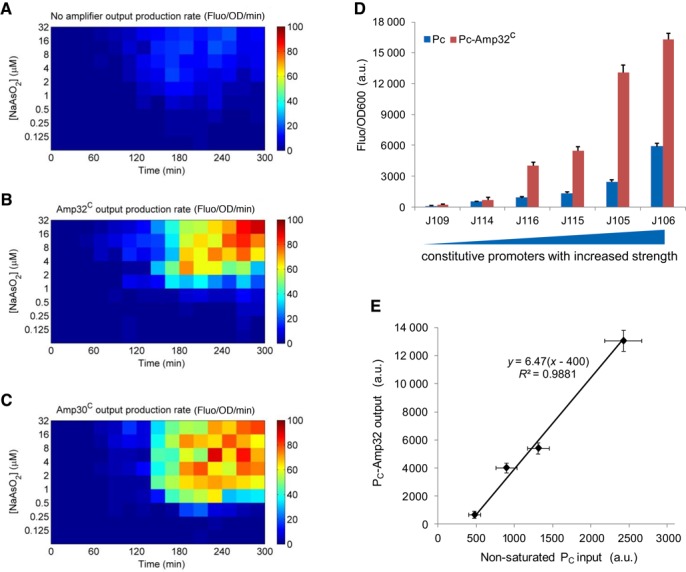Figure 3.

Signal amplification dynamics and modularity of the fixed-gain amplifier Amp32C. Dynamic responses of the arsenic sensor without amplification (A), amplified by Amp32C (B) and Amp30C (C). (D) The performance of Amp32C using a set of constitutive promoters as inputs and the gfp as output. Six constitutive promoters of varying transcriptional strengths are used—J109, J114, J116, J115, J105 and J106. The blue bars are the promoter output responses without the amplifier while the red bars are the ones amplified. (E) The scatter plot shows the linear relationship between the non-saturated transcriptional inputs (J114, J116, J115, J105) and the amplified outputs as in (D) by fitting to a linear model. Data are means and s.d. for three replicates.
